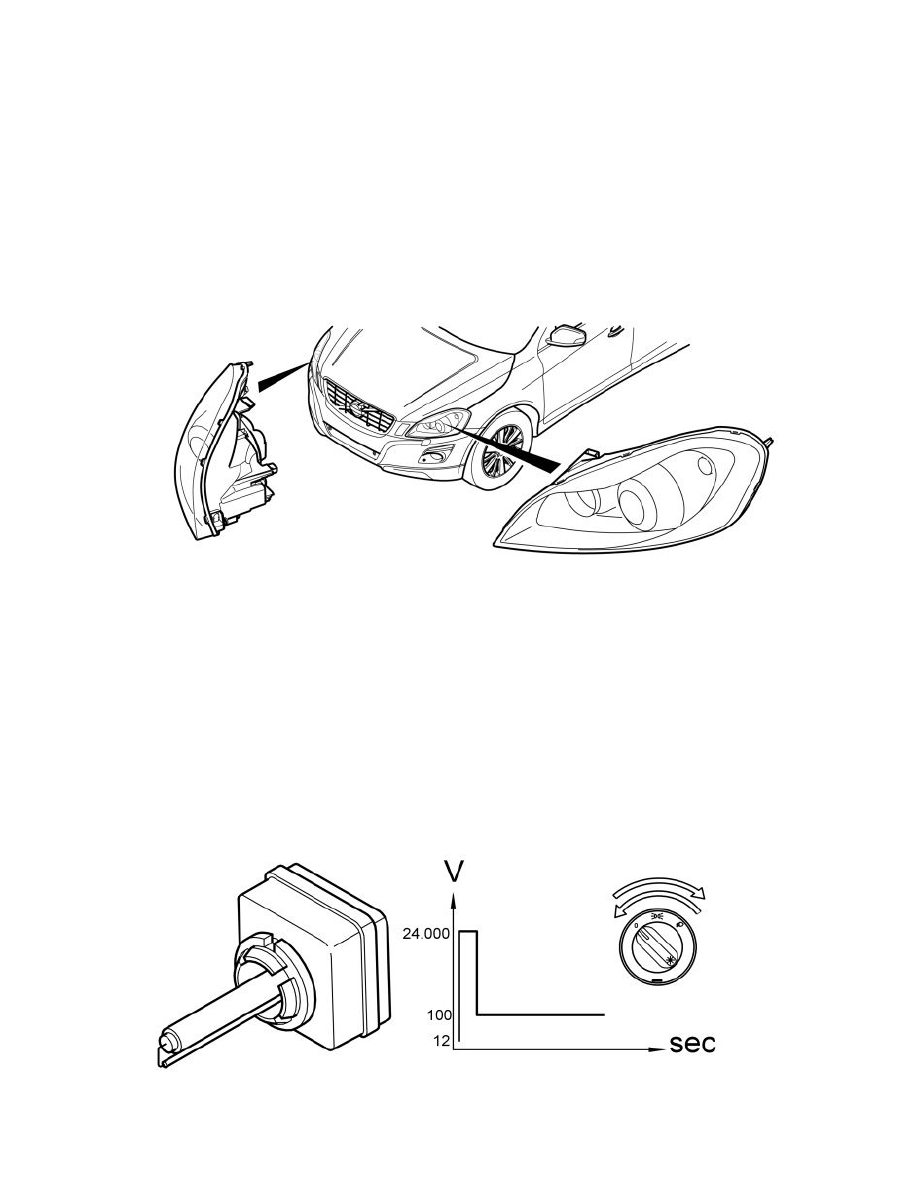XC60 AWD L6-3.2L VIN 96 B6324S2 (2010)

Vehicles without Four-C (Continuously Controlled Chassis Concept) have two position sensors for automatic headlamp adjustment. The headlamps are
adjusted vertically based on load and road conditions to reduce the risk of dazzling.
One position sensor is located next to the rear axle and is connected to the left-hand rear control arm by a linkage system. The other position sensor is
next to the right-hand front axle and is connected to the right-hand front control arm by a linkage system. This linkage system affects the sensor, allowing
the angle of the car to be gauged.
The position sensors are directly connected to the headlamp control module (HCM). Each position sensor has three connections. Two are used for power
supply and ground. One is used for signals on vehicle angle. When the ignition switch is in position II, level control is active and the sensors are used to
calculate the average vehicle angle. At about 4 km/h (2.5 mph), dynamic level control is activated, which also makes quick corrections during
acceleration and braking. In addition to vehicle speed in excess of about 4 km/h (2.5 mph), darkness is required.
The position sensor can be calibrated using the diagnostic tool. The calibration is saved in the headlamp control module (HCM) and must be performed
again upon replacement of the control module or position sensor.
Vehicles with Four-C (Continuously Controlled Chassis Concept) use the signal from the suspension module (SUM) instead.
There are diagnostics for the position sensors.
Left headlight control unit (LHCU) / right headlight control unit (RHCU)
The left headlamp control unit (LHCU) and right headlamp control unit (RHCU) handle headlamp levelling and active control of the light beam. Active
control means that the light beam is turned out to the left or right. The light beam is turned out at varying degrees and rates depending on vehicle speed
and steering angle.
Information is transferred between the left headlamp control unit (LHCU), right headlamp control unit (RHCU) and headlamp control module (HCM)
via serial communication.
The lamp housing contains a sensor that indicates whether the light beam has been turned out to the right or left. The left headlight control unit (LHCU)
and right headlight control unit (RHCU) send this information to the headlight control module (HCM).
If there is no communication with the headlamp control module (HCM) or there is a fault in the left headlamp control unit (LHCU) and/or right
headlamp control unit (RHCU), headlamp levelling and active control are disabled. The light beam then assumes its "limp-home" position.
The left headlight control unit (LHCU) and right headlight control unit (RHCU) can be diagnosed.
The control units are integrated in the headlamps. If a Left headlamp control unit (LHCU) or Right headlamp control unit (RHCU) becomes damaged,
the entire headlamp must be replaced.
High voltage unit (ballast)
High voltage is required to light the Bi-Xenon lamp.
-
A high voltage unit is connected to each Bi-Xenon lamp. This transforms 12-V voltage to the approximately 24,000 V required to light the lamp.
